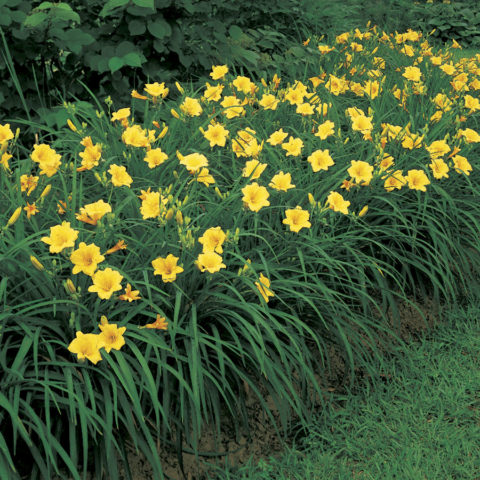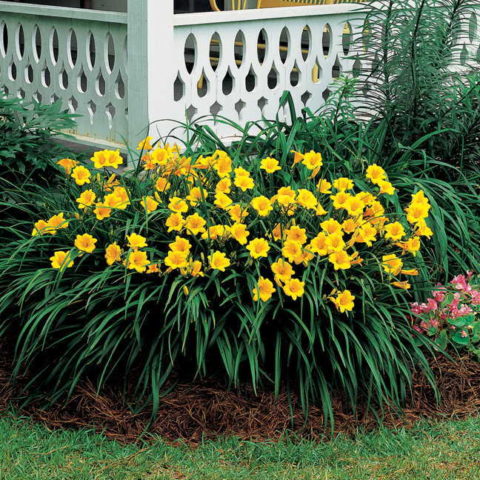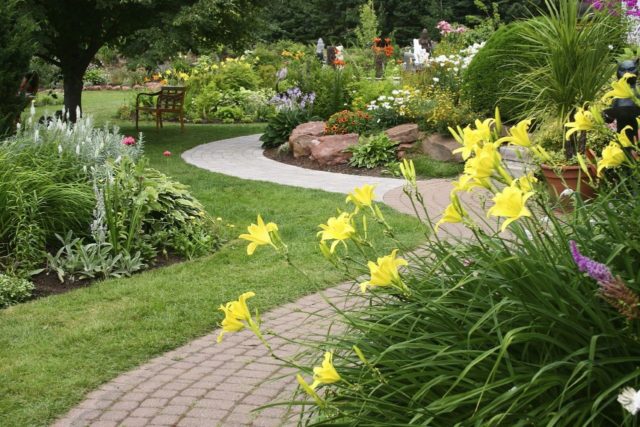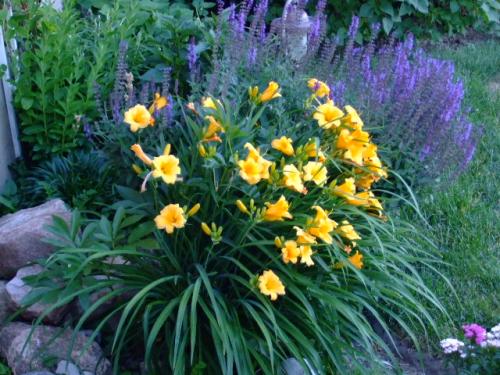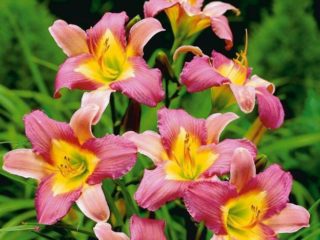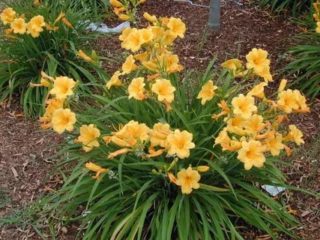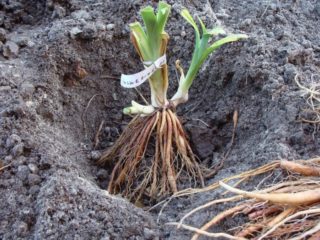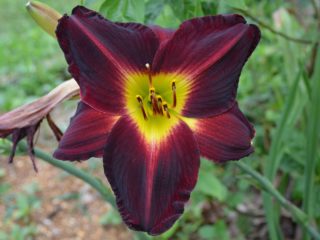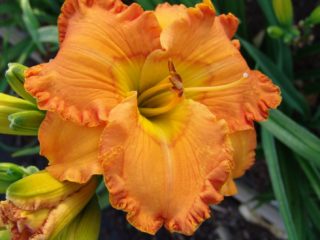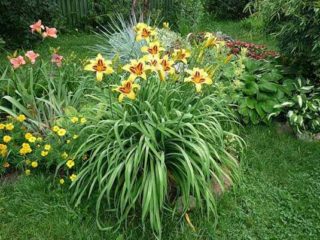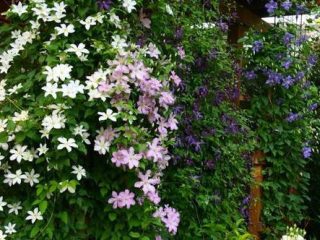Content
Daylily Stella de Oro is a low-growing shrub that blooms throughout the season until the very beginning of October. Produces small flowers in bright shades of yellow and orange. Differs in exceptionally high winter hardiness. Therefore, the plant can be grown even in regions with harsh climates.
Description of daylily Stella de Oro
Daylily of the Stella variety is distinguished by rather beautiful, medium-sized yellow flowers with a diameter of 5-6 cm. They begin to appear in June, and flowering continues until early October. Moreover, it goes on continuously, which allows the owner to constantly enjoy bright colors.
Daylily belongs to low-growing shrubs, its height can vary greatly depending on the growing conditions - on average from 30 cm to 1 m.The leaves are bright green, very narrow and long. Against their background, yellow flowers successfully contrast, which gives the bush beauty.
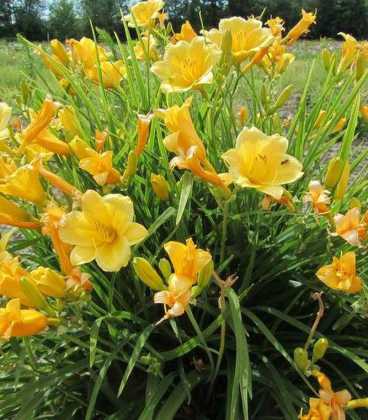
Daylily Stella de Oro flowers can be colored not only yellow, but also orange.
In natural conditions, daylilies are found in Eastern China - it is believed that it was from there that they originally originated. However, the daylily Stella de Oro itself was bred back in 1975. And it was not breeders who worked on it, but an amateur Walter Jablonsky. Subsequently, this hybrid has successfully spread in many countries, including Russia.
Daylily hybrid Stella de Oro in landscape design
Daylilies are indeed very beautiful and attractive shrubs. Due to their undemanding care and ability to withstand even the most severe frosts, they are often used to decorate the garden in various regions. It is very easy to harmoniously fit the Stella de Oro daylily into the garden design - here are some illustrative examples:
- Planting along the borders of the garden (you can easily separate one zone from another).
- Daylilies next to a veranda, terrace or porch.
- The flowerbed "islet" also looks quite attractive.
- Daylilies along the path.
- Daylily can be used not only in single plantings. It looks good in mixborders when paired with other vibrant colors.
Winter hardiness daylily Stella de Oro
The daylily is distinguished by its high winter hardiness. According to this indicator, it is referred to the 6th growing zone. This means that the flower can withstand severe frosts down to -40 degrees. Therefore, the Stella de Oro daylily can be successfully bred not only in the middle lane, but also in the North-West, the Urals, South Siberia and the Far East.
Planting and caring for daylily Stella de Oro
Daylilies are planted on the site in late spring or late summer. Planting rules are standard - you need to choose a well-lit place and dig up the site, apply fertilizer and plant seedlings.
Selection and preparation of the landing site
In natural conditions, these flowers grow along the edges of forests.Therefore, when choosing a site, it is necessary to take into account the following recommendations:
- The place should be spacious and well lit. Weak shading is allowed only in the south - in other regions, the sun's rays should freely fall on the foliage.
- Since long-term stagnation of water is undesirable, it is better to plant a shrub on a small hill.
- The soil should be fairly fertile and well loosened. Therefore, before planting, the site is cleaned and carefully dug up.
Landing rules
The landing algorithm is as follows:
- A small hole up to 30 cm deep is dug on the site.
- The same amounts of peat, sand and humus are poured into it, 200 g of ash and 40 g of phosphorus-potassium fertilizer are added.
- Lower the seedling, carefully straighten the roots.
- Sprinkle with the mixture, but not too tightly. This must be done so that the root collar is visible on the surface.
- Water abundantly, give half a bucket of water.
Watering and feeding
Taking care of the hybrid daylily Hemerocallis Stella De Oro is not that difficult. Since the flower usually has enough natural precipitation, additional watering in the presence of rain is not required at all. If the soil has dried to a depth of 5-7 cm, watering is needed. In case of drought, moisture should be given regularly - 1 or 2 times a week.
The flower is fed 3 times per season (it is enough to use only complex mineral fertilizer):
- In the middle of spring.
- During the period of active foliage growth (early summer).
- At the end of July, after which it is no longer worth giving top dressing.
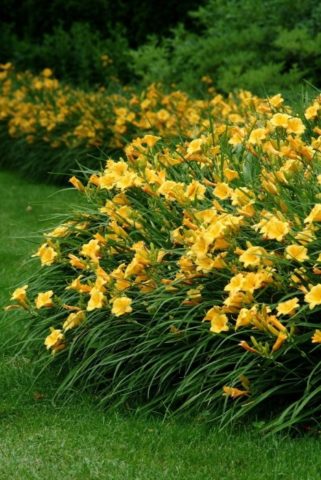
The lush bloom of the Stella de Oro daylily can be achieved even with minimal maintenance
Pruning a daylily hybrid Stella de Oro
Pruning is best done in autumn, already at the beginning of October - with the onset of the first frost. At this time, remove all damaged and wilted leaves. After the onset of the first frost, it is advisable to cut off the hanging leaves so that they rise 5-10 cm above the soil. The plant does not need a second spring shearing.
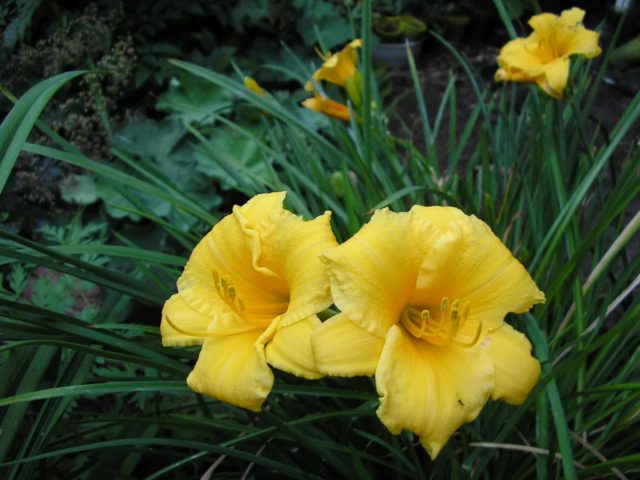
The cut flowers of the Stella de Oro daylily retain their freshness well, which allows them to be used in bouquets
Preparing for winter
No special preparation for winter is required. Daylily Stella de Oro tolerates even very severe frosts, therefore, unlike many other flowers, it is not necessary to dig it out of the soil, it is not even necessary to mulch the roots. But if the region has a too harsh climate, you can lay a small layer (2 cm) of needles, foliage or sawdust. This can be done in late September - early October.
Reproduction
This plant is propagated both by seeds and vegetatively:
- by dissecting the rhizome;
- cutting off the central shoot;
- proliferation (the so-called rooting of inflorescences).
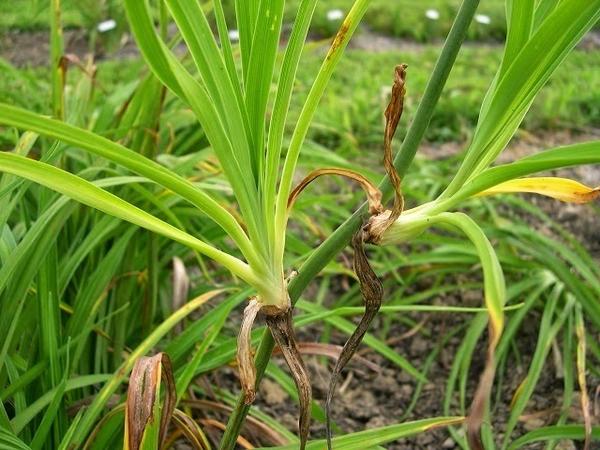
When multiplying by polyiferation, part of the top of the flowering shoot is cut off, shortened, leaving 2/3, placed in water to obtain roots, and then planted in open ground the next spring
Diseases and pests
Daylily is highly resistant to various diseases and pests. Only sometimes it can be exposed to bacterial and fungal pathologies, for example:
- rot of the root collar;
- iris leaf spot;
- striped leaves;
- rust.
The main pests that sometimes parasitize on this bush include:
- aphid;
- spider mite;
- thrips;
- gall midge;
- root mite;
- grass bug.
When the first signs of damage appear, the bushes should be treated with fungicides - "Maxim", "Skor", "Fitosporin", Bordeaux liquid. Sometimes insecticides are needed - "Biotlin", "Aktara", "Karate".
Folk insect repellents are also quite effective.Use aqueous solutions of household dust shavings, baking soda, ammonia, mustard powder. If the pest colonies do not subside, it is necessary to treat the plant with a chemical as soon as possible.
Conclusion
Daylily Stella de Oro is one of the easiest ways to decorate your garden with your own hands. The flower will take root on almost any soil. It tolerates both severe frosts and short drought well. Therefore, any novice gardener can grow it.
